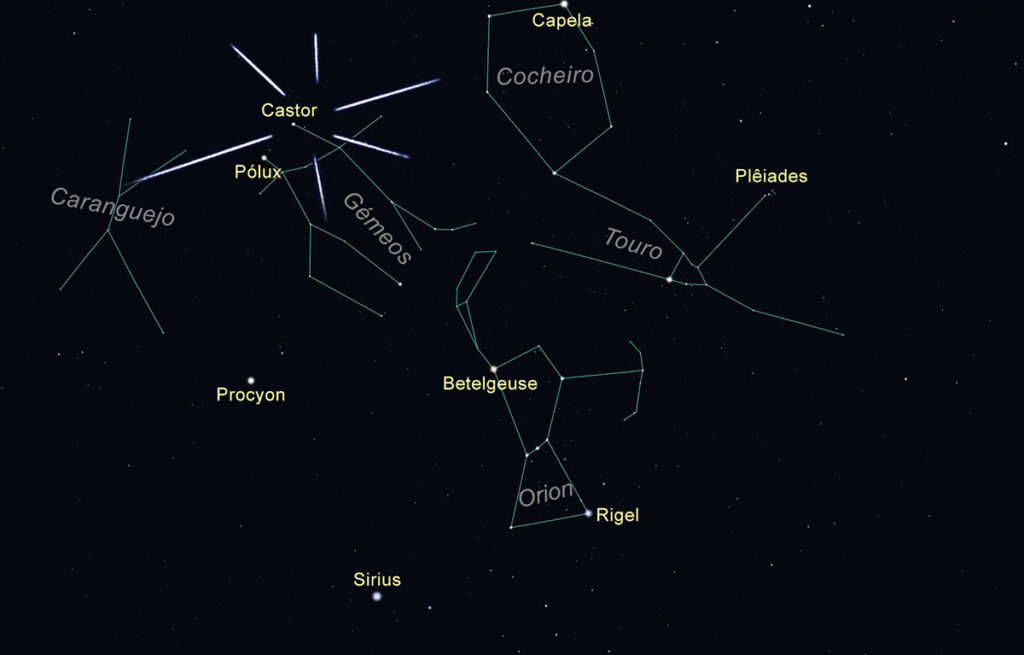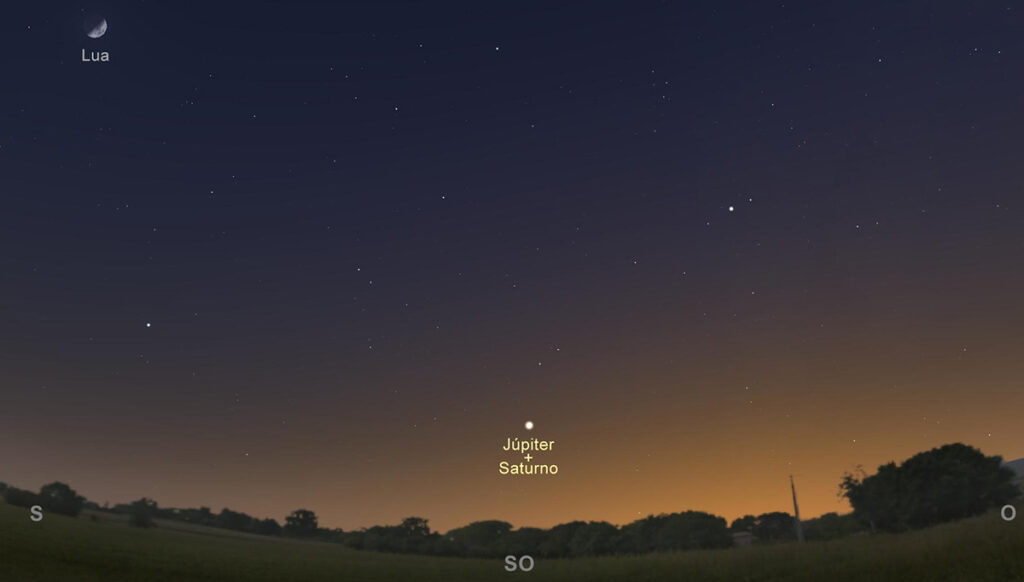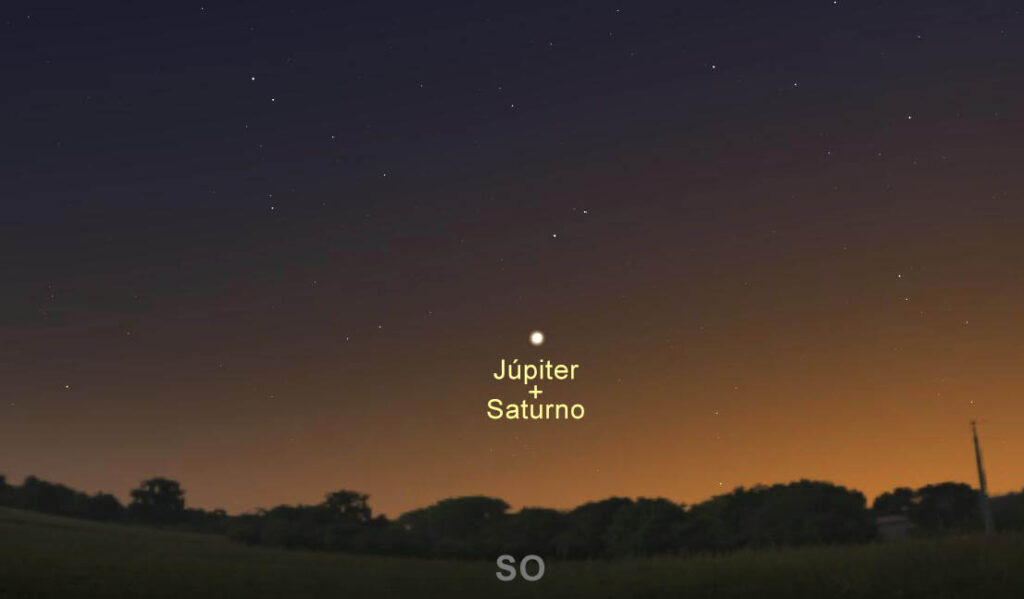Despite the restrictions, don't miss, this December, the Geminid meteor shower and the great Jupiter/Saturn conjunction, a once-in-a-lifetime event.
But let's go in order. On December 8th, the Moon reaches the waning quarter phase and, on December 13th, a very thin Moon, almost new, passes 6 degrees from the planet Venus. On this day, Venus rises around 05:00 am and the Moon at 06:30 am, with the Sun rising about an hour later.
The next day, the Moon reaches the new moon phase. This is great news because this is also the peak day of the Geminid meteor shower, one of the biggest recurrent “star” showers of the year.

The peak is expected to occur around 1:00 am on the 14th, with an hourly number of meteors hovering around 150… in dark skies, of course! If you are in a city with a lot of light pollution, only count between 10% and 30%.
the radiant of this rain (the point from which the meteors seem to emanate) is in the constellation Gemini, which is born shortly after dark.
In this rain, it is common for the number of meteors per hour, in the hours immediately before and after the peak, to be basically the same as during the peak. Adding this to a moonless night (if the weather helps), one of the best showers of stars in recent years can be expected.

A week later, on the 21st, it is the triple day: the Moon reaches the crescent, Jupiter and Saturn are in great conjunction and it is the solstice day (winter, in the Northern Hemisphere).
Of the planets visible to the naked eye in our sky, Jupiter and Saturn are the slowest to complete a return to the Sun, with translation periods of respectively 11,86 years (0,083 degrees per day) and 29,65 years (0,033 degrees per day) per day).
With Jupiter gaining about 0,05 degrees a day, every 19,8 years Saturn makes an advance turn, that is, these planets meet in our sky approximately once every 20 years. But not all of these encounters are at the same distance.
The last time the two stars met in the sky, on May 31, 2000, they were just over 1,17 degrees apart. To give you an idea of what this means, if you stretch an arm towards the sky, with your little finger you can cover about 1 degree of sky.
Viewed with the naked eye, our Moon is half that size. Therefore, although close, in the last conjunction Jupiter and Saturn were perfectly distinguishable from each other.
This time, the two planets pass within 0,1 degrees of each other! So close that they must appear to be a single star, very bright (those who are more attentive may be able, with difficulty, to distinguish them from one another).
The last time these two were this close in heaven was in 1623 and they won't be this far again until 2080, so don't miss the date.
Also on the 21st, the winter solstice occurs, the day, throughout the year, when the sun passes lower in the sky at solar noon and one of the shortest days of the year, with the sun above the horizon a little less of 9:10 am in Bragança, about 9:30 am in Lisbon and the Azores and 10 am in Madeira.
To end the year, on the 30th we will be treated to a beautiful full moon.
Happy observations, happy holidays and good wishes for a 2021 with less confinement!
Author Ricardo Cardoso Reis (Porto Planetarium and Institute of Astrophysics and Space Sciences)
Science in the Regional Press – Ciência Viva
Help us to do the Sul Informação!
Contribute your donation so that we can continue to make your journal!
Click here to support us (Paypal)
Or use our IBAN PT50 0018 0003 38929600020 44



















Comments